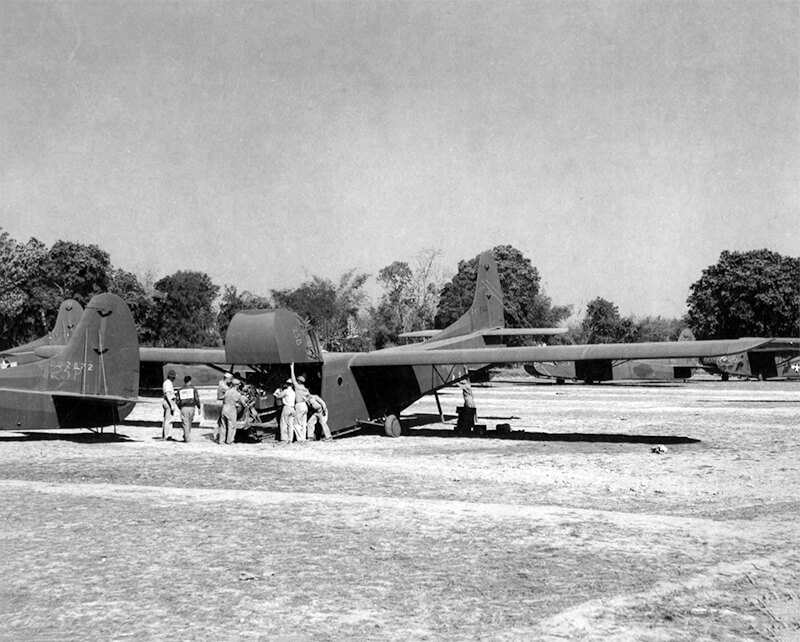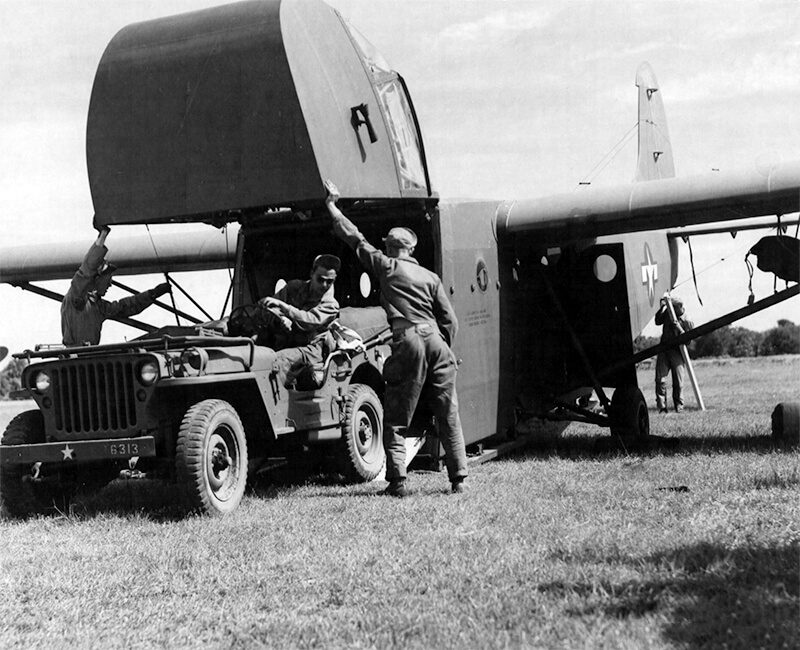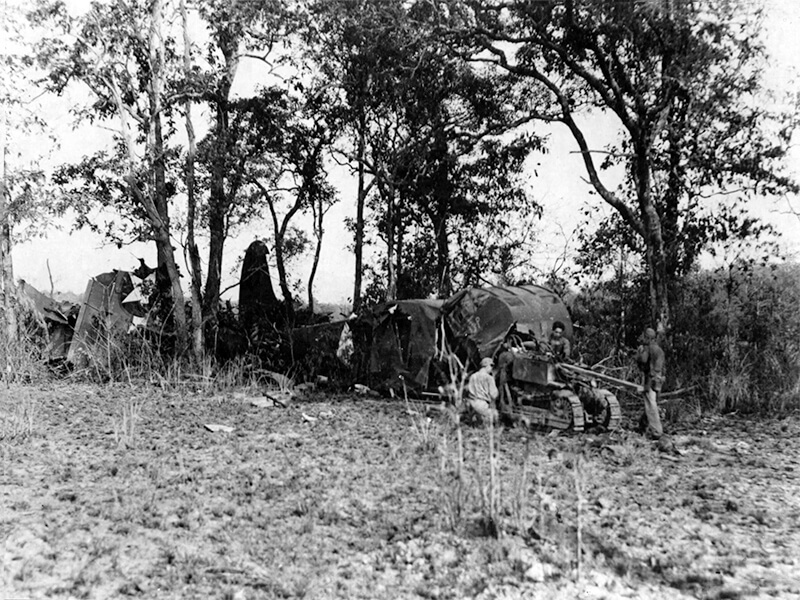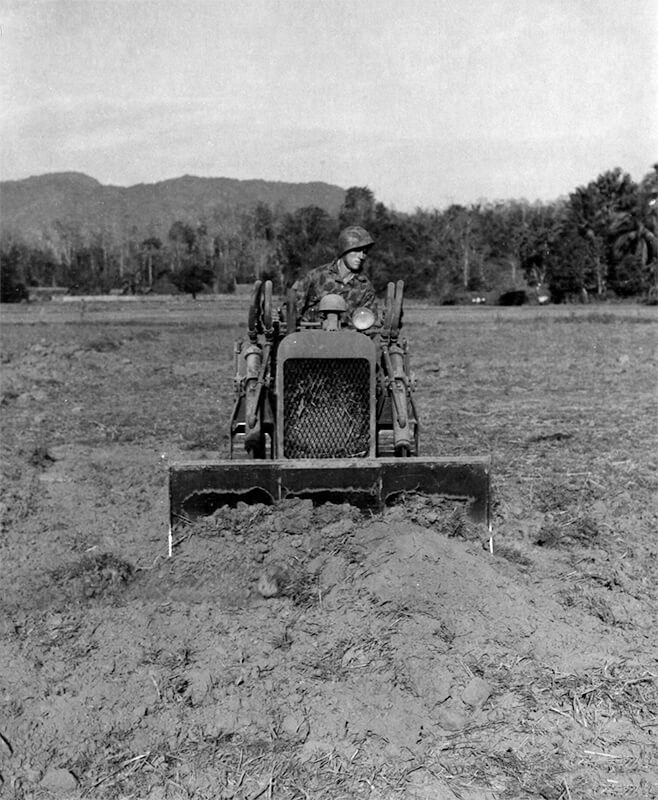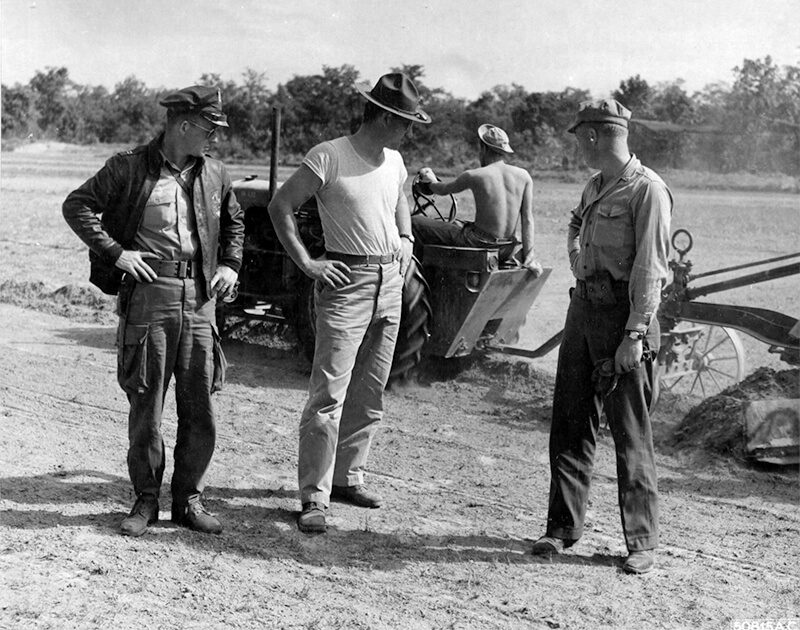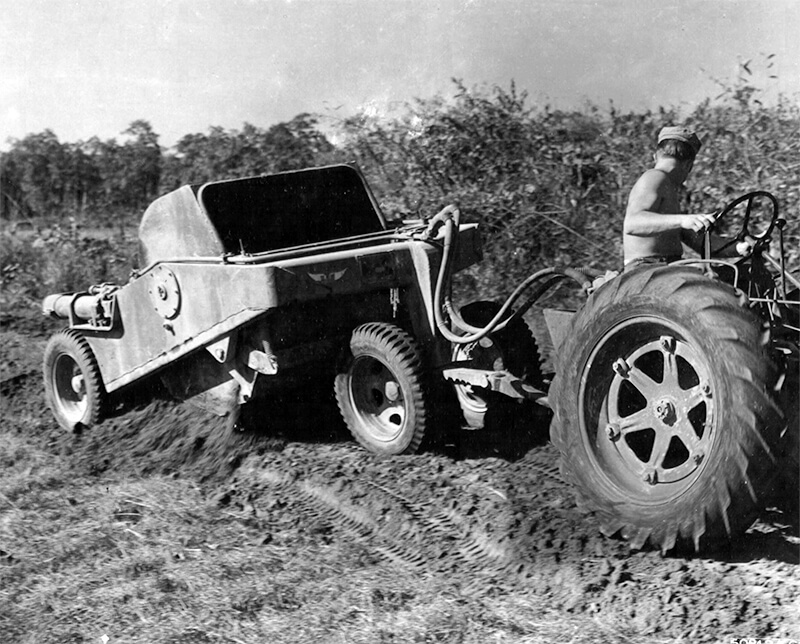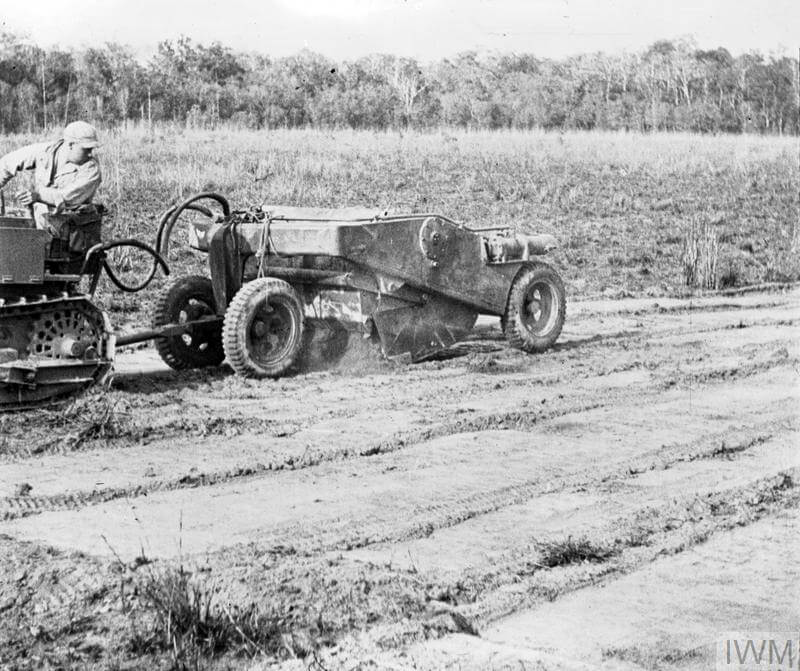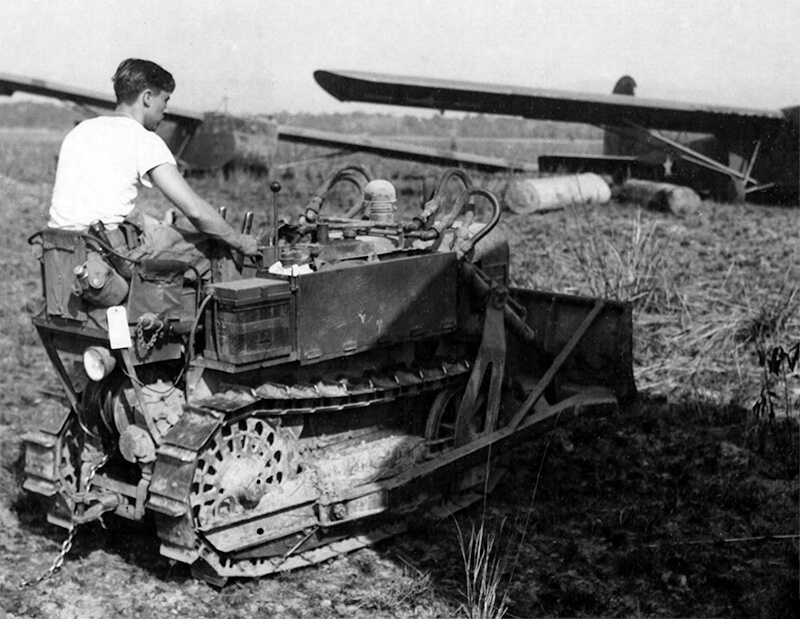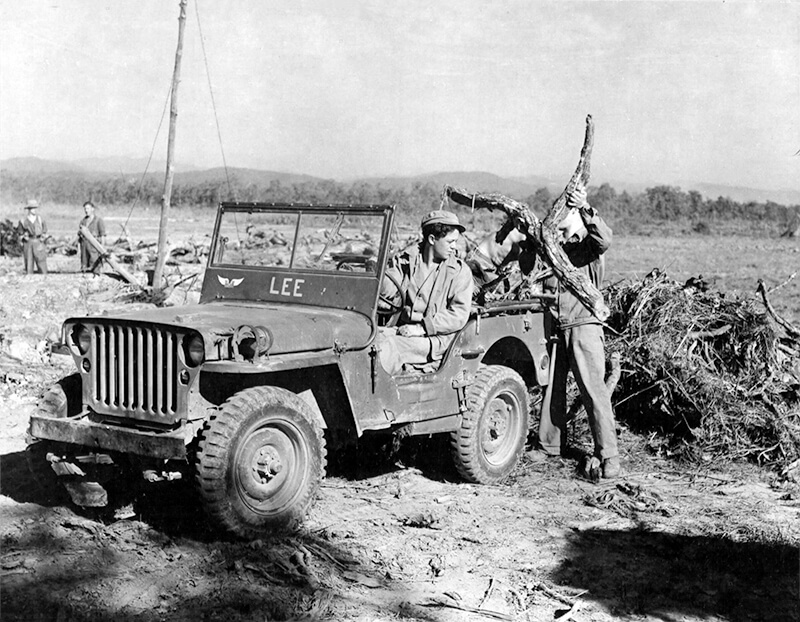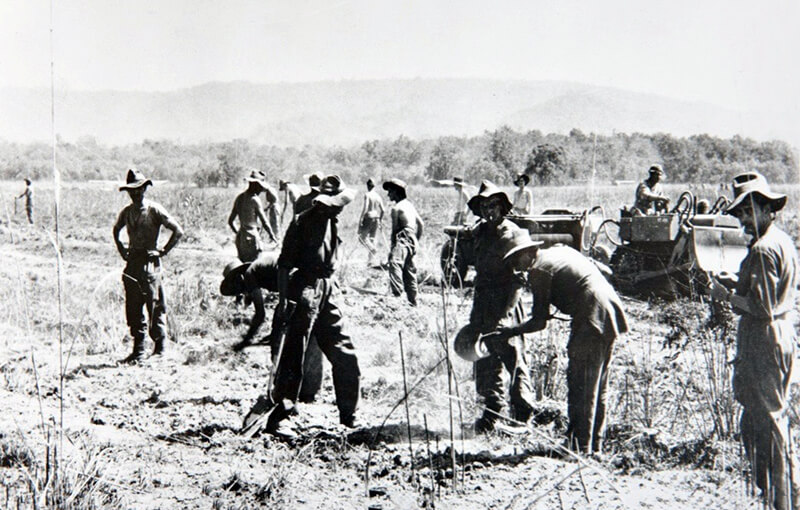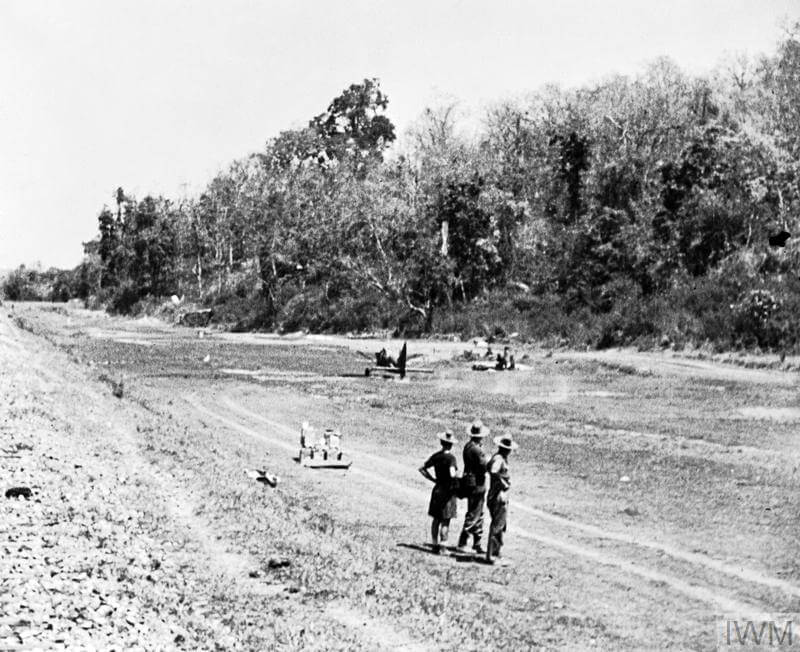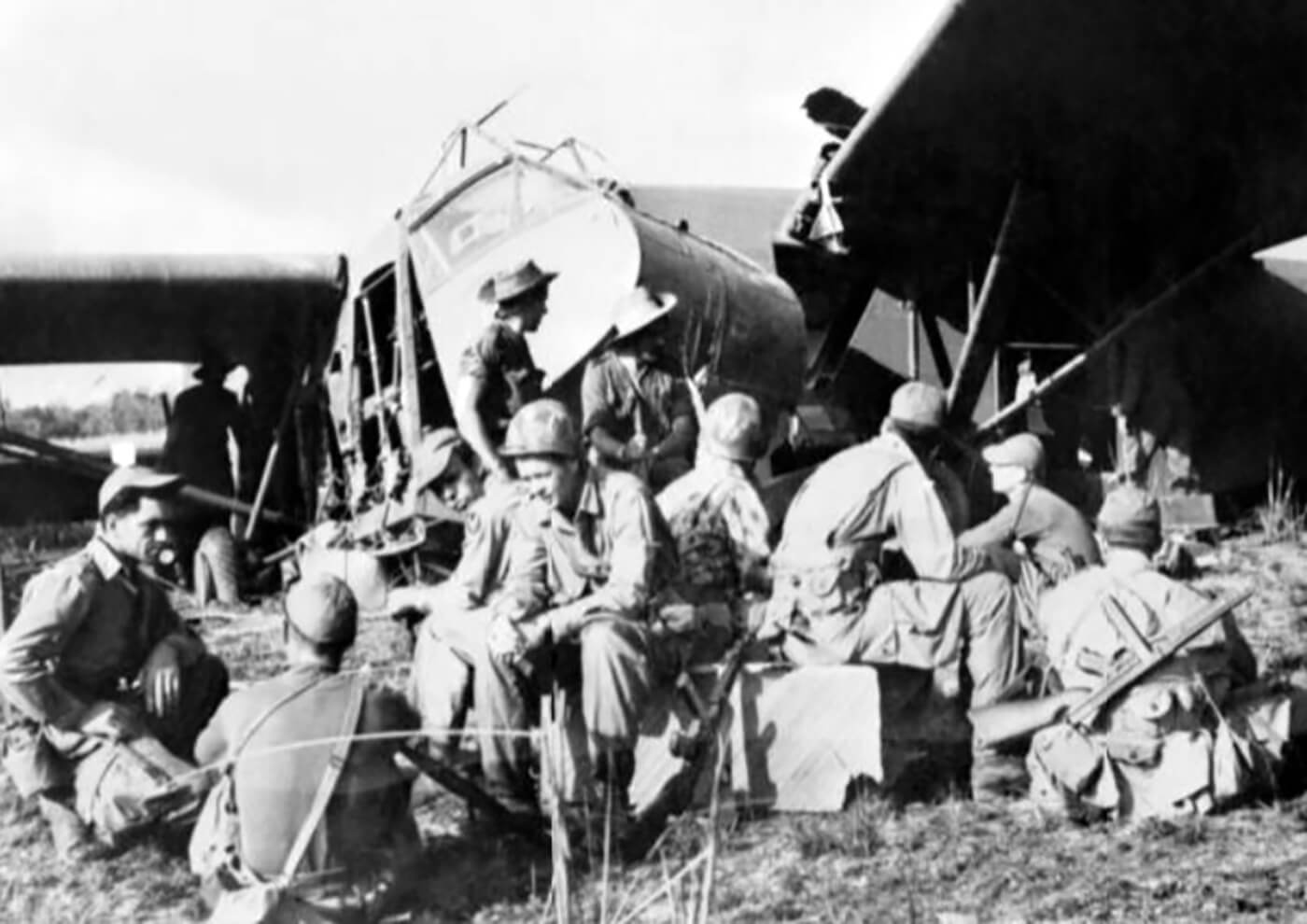| Page Created |
| February 11th, 2023 |
| Last Updated |
| March 17th, 2023 |
| Country |
 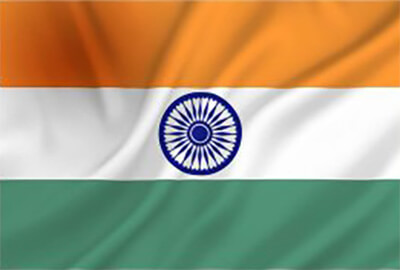  |
| Special Forces |
| 1st Air Commando Group Chindtis |
| February 5th, 1944 – March 11th, 1944 |
| Operation Thursday (Insertion Phase) |
| Objectives |
- Aiding Stilwell’s Ledo force in advancing towards Myitkyina by disrupting the Japanese 18th Division’s communication, obstructing its rear, and impeding its reinforcement.
- Enabling Yunnan Chinese forces to cross the Salween River and penetrate Burma by creating a favorable situation.
- Cause maximum harm and disarray to the enemy in North Burma.
| Operational Area |
Katha Area, Burma
| Unit Force |
3rd Indian Infantry Division
Major-General Orde C. Wingate
- 3rd West African Brigade (Thunder)
- 10 Headquarters Column, Brigadier A.H. Gillmore,
- 6th Battalion, Nigeria Regiment: 66 and 39 Columns
- 7th Battalion, Nigeria Regiment: 29 and 35 Columns
- 12th Battalion, Nigeria Regiment: 12 and 43 Columns
- 7th (West African) Field Company, West African Engineers (WAE)
- 3rd (West African) Field Ambulance, West African Army Medical Corps (WAAMC)
- 3rd (West African) Infantry Brigade Provost Section
- Details from West African Army Service Corps (WAASC)
- 14th Infantry Brigade (Javelin)
- 59 Headquarters column, Brigadier Thomas Brodie
- 2nd Battalion Black Watch: 42 and 73 Columns
- 1st Battalion, Bedfordshire and Hertfordshire Regiment: 16 and 61 Columns
- 2nd Battalion, York and Lancaster Regiment: 65 and 84 Columns
- 7th Battalion, Leicestershire Regiment: 47 and 74 Column
- 54th Field Company Royal Engineers & Medical Detachment
- 16th Infantry Brigade (Enterprise)
- 99 HQ column, Brigadier B.E. Fergusson
- 2nd Battalion, The Queen’s Royal Regiment (West Surrey): 21 and 22 Columns
- 2nd Battalion, Leicestershire Regiment: 17 and 71 Columns
- 51st/69th Regiment, Royal Artillery: 51 and 69 Columns
- 45th Reconnaissance Regiment: 45 and 54 Columns
- 2nd Field Company Royal Engineers & Medical Detachment
- 77th Indian Brigade (Emphasis)
- 25 HQ column, Brigadier Mike Calvert
- 1st Battalion, The King’s Regiment (Liverpool): 81 and 82 Columns
- 1st Battalion, The Lancashire Fusiliers: 20 and 50 Columns
- 1st Battalion, South Staffordshire Regiment: 38 and 80 Columns
- 3rd Battalion, 6th Gurkha Rifles: 36 and 63 Columns
- 3rd Battalion, 9th Gurkha Rifles: 57 and 93 Columns
- 142 Company, Hong Kong Volunteers & Medical and veterinary detachments
- 111th Indian Brigade (Profound)
- 48 Headquarters Column, Brigadier W.D.A. Lentaigne
- 1st Battalion, The Cameronians: 26 and 90 Columns
- 2nd Battalion, The King’s Own Royal Regiment (Lancaster): 41 and 46 Columns
- Part 3rd Battalion, 4th Gurkha Rifles: 30 Column
- Mixed Field Company Royal Engineers/Royal Indian Engineers & Medical and veterinary detachments: Support
- Morris Force
- Lieutenant-Colonel J.R. Morris
- 4th Battalion, 9th Gurkha Rifles: 49 and 94 Columns
- Part 3rd Battalion, 4th Gurkha Rifles: 40 Column
- Dah Force
- Lieutenant-Colonel D.C. Herring
- Kachin Levies
- Bladet (Blain’s Detachment)
- Major Blain
- Glider borne commando engineers
- Royal Artillery
- R, S and U Troops, 160th Field Regiment, Royal Artillery (25 pounders)
- W, X, Y, and Z Troops, 69th Light Anti-Aircraft Regiment, Royal Artillery (40 mm Bofors)
- Divisional Support Troops
- 2nd Battalion Burma Rifles. One section assigned to each column except for columns in the 3rd West African Brigade
- 145th Brigade, Company Royal Army Service Corps
- 219th Field Park Company, Royal Engineers
- 61st Air Supply Company, Royal Army Service Corps
- 2nd Indian Air Supply Company, Royal Indian Army Service Corps
Galahad
- 5307th Composite Unit (Provisional) (Merrill’s Marauders)
- 1st Battalion; Red and White Combat Teams
- 2nd Battalion; Blue and Green Combat Teams
- 3rd Battalion; Khaki and Orange Combat Teams
- 23rd British Infantry Brigade
- 32 HQ Column, Lancelot Perowne
- 1st Battalion Essex Regiment: 44 and 56 Columns
- 2nd Battalion Duke of Wellington’s Regiment (West Riding): 33 and 76 Columns
- 4th Battalion Border Regiment: 34 and 55 Columns
- 60th (North Midland) Field Regiment, Royal Artillery: 60 and 68 Columns
- 12th Field Company Royal Engineers & Medical Detachment
Air Support
- No.1 Air Commando Force (United States Air Force)
- 27th Troop Carrier Squadron (United States Air Force
- 315th Troop Carrier Squadron (United States Air Force)
- 31st Squadron (Royal Air Force)
- 62nd Squadron (Royal Air Force)
- 117th Squadron (Royal Air Force)
- 194th Squadron (Royal Air Force)
| Opposing Forces |
- 18th Division, Chrysanthemum Division, 菊兵團, Kiku Heidan
- 55 Infantry Regiment
- 56 Infantry Regiment
- 114. Infantry Regiment
- 124. Infantry Regiment
- 18. Mountain Artillery Regiment
- 12. Engineer Regiment
- 12. Transport Regiment
- 18/1. Signals company
- 18/2. Signals company
- 18. Sanitation company
- 18/1. Field hospital
- 18/2. Field hospital
- 18/3. Field hospital
- 18/4. Field hospital
- 18. Epidemic Prevention and Water Purification Department
- 18. Veterinary department
- 31st Division, Furious Division, 烈兵団, Retsu Heidan
- 31st Infantry brigade
- 58. Infantry Regiment
- 124. Infantry Regiment
- 138. Infantry Regiment
- 31. Mountain Artillery Regiment
- 31. Engineer Regiment
- 31. Transport Regiment
- 31. Signals Company
- 31. Ordnance Company
- 31. Sanitation Company
- 31/1. Field Hospital
- 31/2. Field Hospital
- 31/3. Field Hospital
- 31. Epidemic Prevention and Water Purification Department
- 31. Veterinary Department
- 31st Infantry brigade
| Operation Thursday |
| The Plan and Preparations |
For operation Thursday General Wingate is once again sent to Burma, this time without a clear offensive or strategic objective in mind. Initially considering resignation, General Wingate discovers through intelligence reports that the Japanese are assembling troops for an invasion of India. This realisation prompts him to reconsider, and he continues the planning for Operation Thursday, committing No. 1 Air Commando Force and other units to the operation until the monsoons arrived.
The plan for the invasion of Burma was simple: two columns of General Wingate’s Special Force, airborne engineers, and air-transportable equipment would be transported by gliders into jungle clearings near Katha under cover of darkness. The engineers would then prepare landing strips during the day, while transport planes would bring in the rest of the Chindits in the following nights. Despite its seeming simplicity, the plan was constantly subject to adjustments due to the fluid situation around the Indo-Burmese border.
Before South East Asia Command (SEAC) released the mission’s operating procedures, changes are made to the original plan. Initially, the plan called for a tow of fifty-two gliders to Tamu to test the plan, but the idea is scrapped due to the possibility of Japanese activity in the area. This denial of the base means the mission must be conducted from Lalaghat, Hailakandi, and Tulihal (Imphal), which requires the Dakotas to fly at 8,000 metres over the Imphal plateau and cross the Chin Hills before entering Burma. The impact of this added altitude requirement is not fully understood when the revised plan is finalised.
General Wingate releases the operating orders for Operation Thursday on 29th, February 1944, stating that on 5th, March 1944, C-47 Dakotas would tow forty gliders each to jungle clearings named Broadway and Piccadilly. The take-off time is set for 17:00, so the pathfinder gliders would reach the objective areas just after dark. The main force would take off 40 minutes later, with a one-minute interval between each takeoff.
The units involved in the operation are from both British and American, with British Brigadier Michael Calvert’s 77th Brigade providing troops for D-Day and Brigadier W. D. A. Lentaigne’s 11th Brigade joining the combat three days later. The 3rd West African Brigade, 14th Brigade, and 23rd Brigade are held in reserve and deploy, as necessary. Seven air force units are tasked with providing aircraft and crews: the No.1 Air Commando Force (USAAF), 315th Troop Carrier Squadron (USAAF), 27th Troop Carrier Squadron (USAAF), 31st Squadron (RAF), 62nd Squadron (RAF), 117th Squadron (RAF), and 194th Squadron (RAF).
The No.1 Air Commando Force was selected to lead the airborne aspect of the mission. Based on the dual tow experience of his C-47 crew, Colonel Cochran recommends all twenty-six of his transport pilots to be designated as aircraft commanders. General Old reluctantly agrees to provide the remaining aircraft and co-pilots. Four days before the mission, UC-64 Norsemen are added to the mission to deliver 500 kilograms of concertina wire and other materials needed for establishing strong points at Piccadilly and Broadway.
The mission is expected to last for seven days. The second and third days, March 6th and 7th, 1944, are dedicated to the air landing the Chindits at Piccadilly and Broadway airfields. On March 8th, 1944, the 111th Brigade was going to be towed to Chowringhee, a clearing near the Shweli River named after Calcutta’s main street. The entire operation is planned to be finished by March 11th, 1944, following the same procedures at Piccadilly and Broadway.
A fourth clearing, Templecombe, is also used, but with a different approach. It is intended for a small unit, Dah Force, and is to be cleared by Burmese laborers under the supervision of a special operations agent. The timing of the glider lift to Templecombe is flexible, and the mission would commence once Templecombe is secure. As events would prove, the execution of Operation Thursday is a showcase of flexibility.
| February 5th, 1944 |
The first part of Operation Thursday begins with Fergusson’s 16th Brigade marching from Ledo to Indaw, known as ‘Aberdeen’ stronghold and cut the communications of the Japanese 18th and 31st Divisions.
| March 5th, 1944 |
On the day of the mission, Air Marshall Baldwin, the senior air commander in South East Asia Command (SEAC), gives the signal that weather conditions are suitable, and Operation Thursday is a go. Colonel Cochran and General Wingate stay behind that night, but many others participate. Colonel Alison, with minimal glider flight experience, pilots a CG-4A to Piccadilly. Lieutenant Colonel Olson heads for Broadway with the communications gear, and Captain Taylor flies the lead glider. Most of the South East Asia Command (SEAC) staff is present as the operation begins. Only Admiral Mountbatten is absent due to an eye injury, but General Slim, Air Marshall Baldwin, General Stratemeyer, and General Old are all on hand.
During the crucial initial moments of the execution phase, General Wingate is directing operations from a tent at the west end of the runway while Colonel Cochran, on a hunch, orders Lieutenant Russhon to take photographs of the clearings from a B-25. To emphasize the gravity of the situation, an escape kit is issued, consisting of ninety silver rupees and a small block of opium. Colonel Cochran reminds everyone that “nothing you’ve ever done, nothing you’re ever going to do, counts now. Only the next few hours. Tonight, you are going to find your souls.”
Fifteen minutes before the scheduled takeoff, Lieutenant Russhon returns with the photos. The clearings of Broadway and Chowringhee are unchanged, but Piccadilly is littered with logs in an intentional pattern. This makes Piccadilly a potential hazard for gliders. Two explanations are offered for the conditions at Piccadilly: the Japanese may have infiltrated the plan and have left Broadway and Chowringhee as a trap, or the previous Chindit operation may have led to the felling of trees as a precautionary measure. The latter explanation is accepted as most likely. In hindsight, it was discovered that Burmese teakwood farmers placed the logs. Regardless of the reason, Piccadilly was ruled out as a landing site.
The best option is to transfer the Piccadilly troops to Chowringhee but it is not ideal given the circumstances. Brigadier Calvert opposes the proposal as the Shweli River would divide his brigade in two. Cancelling the mission is ruled out as it would have a detrimental impact on morale. The only other option is to airlift the entire brigade to one location.
General Slim agrees to the reduced requirement of sixty gliders and commits the entire mission to Broadway. Colonel Cochran takes on the responsibility of informing the C-47 and CG-4A crews who were previously assigned to Piccadilly. With his usual flair, General Slim announced, “He sprang on the hood of a jeep. ‘Sav fellers,’ he announced, ‘we’ve got a better place to go to!'” Despite the significance of the decision, the British and American commanders only delay the mission by 72 minutes.
18:12. The first C-47 takes off with two gliders in tow. The ascending phase was a warning sign of future difficulties for the pilots of the C-47 aircraft and gliders. To reach altitude, each pilot of the C-47 is instructed to fly a left-handed box pattern. The plan involves holding the runway heading for two minutes, turning left for another minute, then left for a four-minute base leg, turning left for another minute, and finally left again to return to the field. If the Dakota reaches or exceeds 750 metres while passing over the runway, the pilot is to proceed to Broadway. During this proces some pilots encounter a slower climb rate than expected and have to circle over Lalaghat to gain more height. Furthermore, during the climb to cruising altitude, further issues arise with the gliders. Four crash soon after takeoff, two are disconnected over Lalaghat when the Dakota they are attached to experience electrical problems, and two more are dropped over Imphal because of high fuel consumption, making it impossible to reach Broadway. All eight of these gliders land west of the Chindwin River.
Nine gliders are lost east of the Chindwin River, with notable passengers including Lieutenant Colonel Olson, Major Richard W. Boebel, Captain Weldon O. Murphy, and others. The journey back to safety for the crews is marked by the bravery of one of the glider mechanics, Corporal Estil I. Nienaber, who drowns silently rather than risk exposing the group’s location to Japanese patrols during a river crossing. Seven out of the nine crews eventually make it back to India or Broadway.
By coincidence, some of the gliders land near Japanese headquarters, leading the Japanese to believe that the landings are raiding parties in support of General Slim’s 4th Corps. This serves as a diversion, keeping Japanese attention focus away from the main landing area. However, the problems encountered at Broadway are not as fortunate.
22:00. The lead glider touches down with the Chindits spreading out to intercept any potential Japanese threats. They find nothing. The subsequent landings are hazardous due to the overweight conditions causing the gliders to approach at a higher speed than planned.
After landing his glider without incident, Colonel Alison takes over command of Broadway. However, the clearing is found to be unsuitable for the assault, with deep ruts and masked obstacles, making it difficult for the gliders to touch down safely. To mitigate the congestion, Colonel Alison rearranges the smudge pots to disperse the landings, but the pace is exhausting. Despite these efforts, two gliders undershoot the field and crash in the jungle, killing all on board, including Lieutenant Cascy, the commander of the engineers. Captain Donald C. Tulloch treats the wounded while others try to free the trapped men from the wreckage. Unfortunately, no communication with Colonel Cochran and General Wingate in India is established due to damage to Colonel Alison’s radio during the landing.
At Lalaghat, the launch of the Dakotas is followed by a formation of 10 UC-64 Norsemen aircraft. Unfortunately, the small aircraft are not equipped for night flying, they quickly loose contact with the lead plane. Even though being instructed to simply stay in formation, Captain Wagner and his crew chief become separated from the others. Despite their efforts to continue the mission, they are unable to locate the objective and are forced to make an emergency landing at a British-held strip in India due to low fuel. Another UC-64 also fails to reach Broadway due to a lack of proper briefing about the change of landing sites. The two pilots, 2nd Lieutenant Fred H. van Wagner and Captain Leon R. McMullen, end up turning back after seeing no lights at Piccadilly and are forced to bail out due to the shortage of fuel and difficulty in locating Lalaghat due to similar navigation radio frequencies in the area. As a result, only two bundles are dropped near Broadway, making this part of Operation Thursday being considered as a failure.
23:00 At the same time as the UC-64’s are returning, the Dakotas return to Lalaghat and after a brief debriefing, the crews prepare to fly again. Based on issues with the towing ropes of the gliders, General Old recommends using only single tow instead of double tow. At that time initially launching some Dakotas with two Wacos in trail, Colonel Cochran eventually agrees to use only single tow. In total, sixty-three gliders, including those released in the Assam area, are dispatched to Broadway.
| March 6th, 1944 |
02:27. Colonel Cochran and General Wingate receive a coded message from Broadway. Communication specialist, Corporal Robert E. True, had been working to repair the damaged radio set and is finally able to send the code word “SOYA-LINK”. Brigadier Tulloch established only two code words for the mission “Pork-Sausage” for success and “Soya-Link”, which indicated trouble, and no more gliders should be dispatched. Due to atmospheric conditions, the message is not received directly from Broadway and is passed through two intermediaries. With the situation at Broadway being unclear, it is assumed that the landing field was under attack.
Colonel Cochran decides to recall the second wave of aircraft, and all except one respond to the recall. This glider has engineering equipment onboard, it flies beyond the landing field and crashes between two trees. Fortunately, the pilot has rigged the bulldozer to the glider’s nose, which protects the equipment and its pilot when the nose slams shut. On board of this last glider is also 2nd Lieutenant Brackett of the airborne engineers, who would play a crucial role in the completion of the Broadway clearing.
When the morning light reaches the Broadway jungle clearing, the damage to both equipment and personnel is revealed. Out of the 37 Waco’s that arrived, only three are intact, thirty-four of the gliders are damaged and unable to be towed away. Although the number of injured is higher than initially estimated, with thirty-three people requiring evacuation, the number of casualties is lower than expected, with twenty-four fatalities, mostly from two gliders that had crashed in the jungle. The dead are given a simple burial and a Burmese chaplain conducts a service in their honor. Despite these losses, the opening operation of Operation Thursday is a success. General Wingate’s team estimates that 539 personnel, three mules, and 15,000 kilograms of supplies are delivered to Broadway. Captain Taylor’s report indicates a total glider payload of 110,000 kilograms based on the manifests. However, these figures do not include the additional supplies brought in by the Chindits, or the changes made to the loading plan because of the Piccadilly situation. Colonel Alison later agrees that General Wingate’s figures are somewhat inaccurate.
06:30 Brigadier Calvert manages to send a message asking for evacuation planes for the wounded. Major Rebori promptly responds by deploying nine L-1 Vigilants, one from Tamu and eight from Taro, as well as six L-5 Sentinels from Taro. The light planes fly low and arrive at Broadway later that morning. They intend to operate from this forward base, but to protect the planes from the enemy, only six patients are evacuated that day, with the rest being airlifted later by a C-47 once the airfield is ready. Alison, seeing the wreckage of gliders and rough terrain, speaks to the surviving engineering officer about preparing the runway. When asks him how long it would take to build an airfield, Lieutenant Brackett replies, “If I have it done by this afternoon, will that be too late?” And he delivers on his promise. Personnel not needed elsewhere is put to work. With manual labor and usable equipment, the men begin filling in the ruts and leveling the ground, using teakwood logs and tractors as makeshift graders.
10:00. General Wingate establishes direct communication with Brigadier Calvert at Broadway. The 77th Brigade commander informs General Wingate and Colonel Cochran that the field is secure, unopposed by the Japanese, and ready for transport planes by nightfall. General Wingate is overjoyed with relief.
16:30. A report is send indicating that a 1,400 metres strip will be completed and lit by evening.
17:30 General Wingate and General Old take off in the lead airplane in the first flight of six Dakotas. Though instructed to approach from the South, General Old decides to land from the North due to traffic. He reports that the field is narrow but usable. Troop Carrier Command sends 62 C-47 sorties into Broadway that night, departing from Lalaghat and Hailakandi. Colonel Alison notes that Broadway is as busy as any civilian airport, saying, “LaGuardia has nothing on us.” The only incident reported is with two Royal Air Force transports, who suffer slight damage during landing, but the planes are flown out two days later.
General Wingate makes the decision to bring the 111th Brigade to Chowringhee two days ahead of schedule due to the positive news about Broadway. After the previous night’s events, Colonel Cochran approves single-tow operations and gets twelve C-47 Dakotas ready. The first gliders are filled with Chindits and engineers, just like in the Broadway assault. All of them make it to the destination. However, one Waco glider overshoots the landing area and crashes, killing everyone on board, including the only bulldozer intended for use in Chowringhee. The following day, the plan is to land the transport planes at Chowringhee on the night of March 7th, 1944. However, Lieutenant Colonel Gaty, who is in charge of Chowringhee, radios in that the landing strip wouldn’t be ready on time without the bulldozer. So, Colonel Cochran sends a C-47 to Calcutta to get another bulldozer.
21:00 The bulldozer is transferred to a glider that takes off for Chowringhee. At Broadway, Colonel Alison also comes to the rescue by loading a bulldozer onto a serviceable glider. The C-47 then tow the load to Chowringhee.
21:00. The bulldozer arrives at Chowringhee. Despite these efforts, the estimations remain that the landing strip won’t be ready until after midnight. Due to the delay in preparing Chowringhee, Colonel Cochran has to alter his plans again and diverts some C-47 sorties to Broadway until Lieutenant Colonel Gaty is ready. Since there is no Japanese resistance, the landing strip at Broadway is improved throughout the day. With a capacity to handle sixteen aircraft an hour, Colonel Cochran sends 92 C-47 aircraft to Broadway that night.
23:30. The code word “Roorkee” is received, indicating that Chowringhee is ready for C-47 Dakotas.
| March 7th, 1944 |
00:29. The first wave of six aircraft takes off for Chowringhee. However, by the time 24 Dakotas have taken off, Chowringhee reports that only eight hundred metres of the landing strip are lit and approved for use. With 1,400 metres needed for night operations, Brigadier Tulloch orders the recall. Several planes don’t make it back, but none of them experience landing difficulties.
While the airlift into Broadway is underway, Colonel Cochran’s forces scourges Burma in search of the Japanese Air Force. It isn’t until March 8th, 1944, that any enemy action is detected. Intelligence shows that the Japanese are gathering aircraft in the Shwebo area of Central Burma. In response, Lieutenant Colonel Mahoney leads a 21-plane fighter sweep over the Anisakan airfield, armed with a single 250-kilogram bomb each. Upon finding around seventeen fighters on the ground, the formation launch an attack, dropping bombs and auxiliary fuel tanks on anti-aircraft positions and strafing the airfield. Next, Lieutenant Colonel Mahoney takes his flight over the airfields of Onbauk and Shwebo, where they find about sixty aircraft, including fighters, bombers, transports, and trainers, either landing or on the ground. The Mustangs focus on the bombers, using the same techniques as at Anisakan. By the time they have spent all their ammunition, they have destroyed twenty-seven fighters, seven bombers, and one transport on the ground, as well as one fighter in the air. As soon as he lands, Lieutenant Colonel Smith switches planes and goes back to the Onbauk and Shwebo airfields in a B-25H. He arrives at the fields at 20:00 and pattern-bombed the revetments with fragmentation and incendiary loads, taking out an additional twelve aircraft. When he returns to Hailakandi, he reports that the enemy airfields are ablaze with buildings, gasoline trucks, and an oil storage depot on fire. In just one day, the assault force has destroyed a total of forty-eight enemy aircraft, accounting for over 40% of all Japanese aircraft destroyed by the Allies in the Chinese Burmese and Indian Theater during March.
| March 9th, 1944 |
General Wingate determines that the location and capacity of Broadway are more valuable than those of Chowringhee. Consequently, he dispatches Brigadier Tulloch to Burma to coordinate the planned evacuation with Brigadier Lentaigne, the commander of the 111th Indian Brigade.
| March 10th, 1944 |
The evacuation of Chowringhee is successfully accomplished by 06:00, just before the Japanese launch a bombing attack on the strip of wrecked gliders at 13:00. With the focus now on Broadway, General Wingate deploys additional troops and supplies to the area.
| March 11th, 1944 |
As there is no response to the signal from Templecombe, General Wingate decides to transfer Dah Force from Waco gliders to Dakotas and airlift them into Broadway. The Japanese forces do not pose any significant resistance against Broadway, and Operation Thursday is concluded on that same day.
During the operation, 7,032 men, 132 horses, 994 mules and 201,500 kilograms of supplies are lifted to Broadway. Chowringhee receives 2,029 men, forty-three horses, 289 mules and 30,000 kilograms of supplies.
| Multimedia |
| Operation Thursday Video |
| Operation Thursday Photograph |
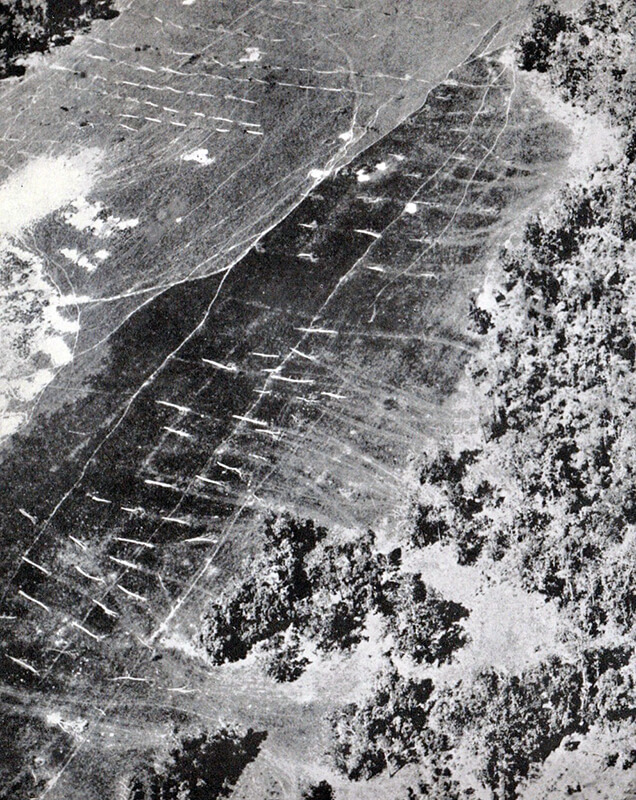
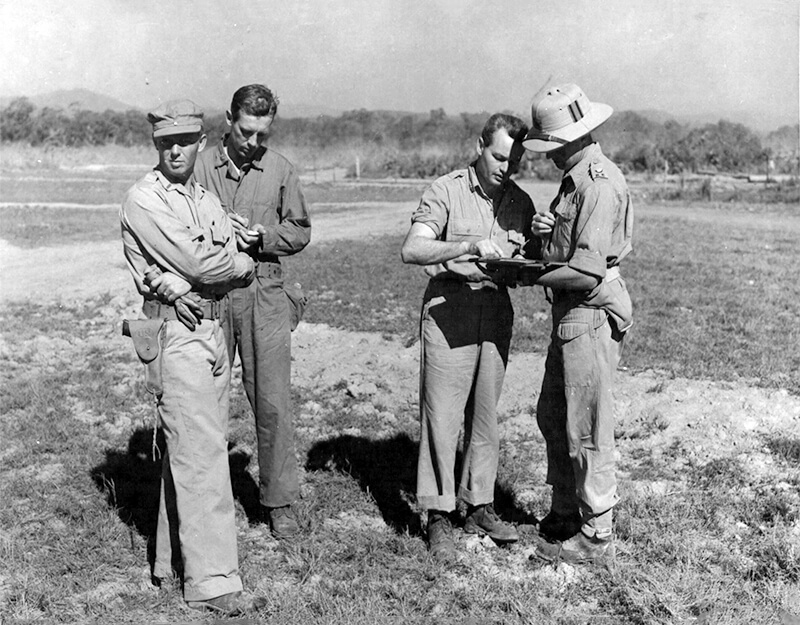
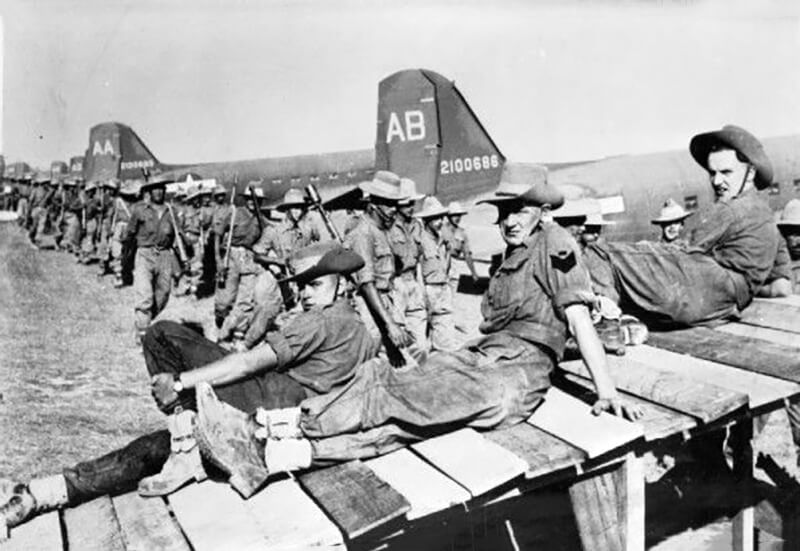
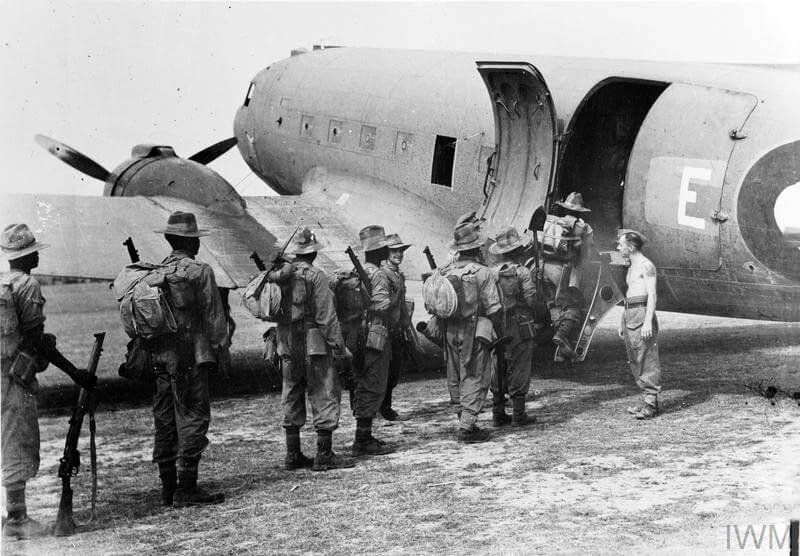
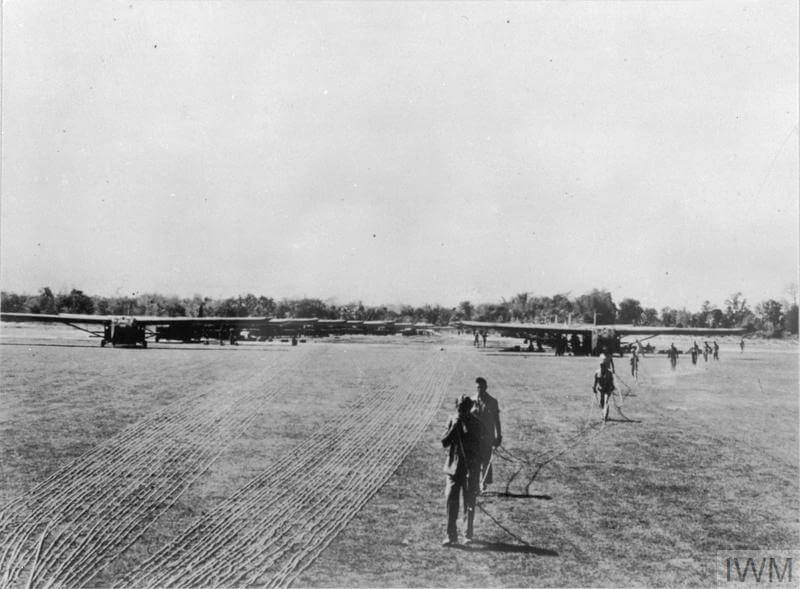
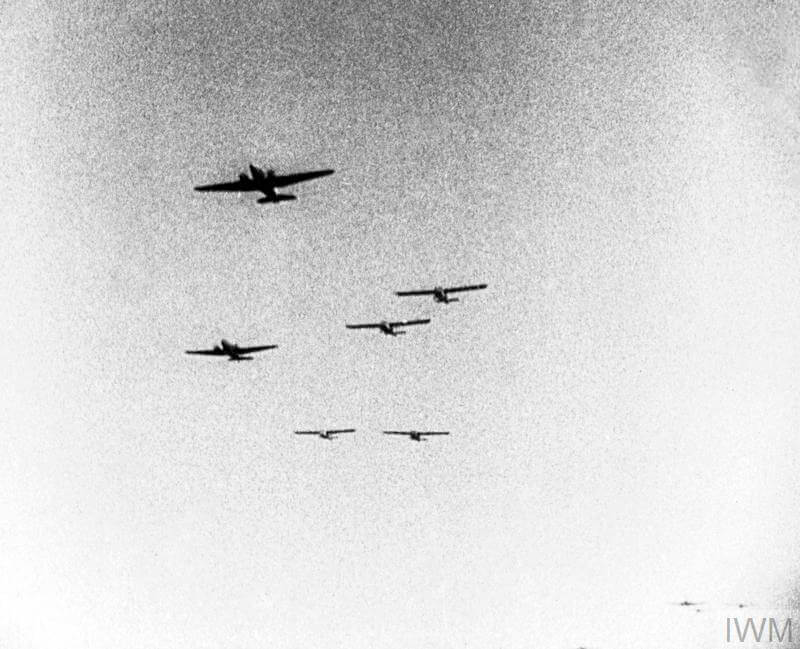
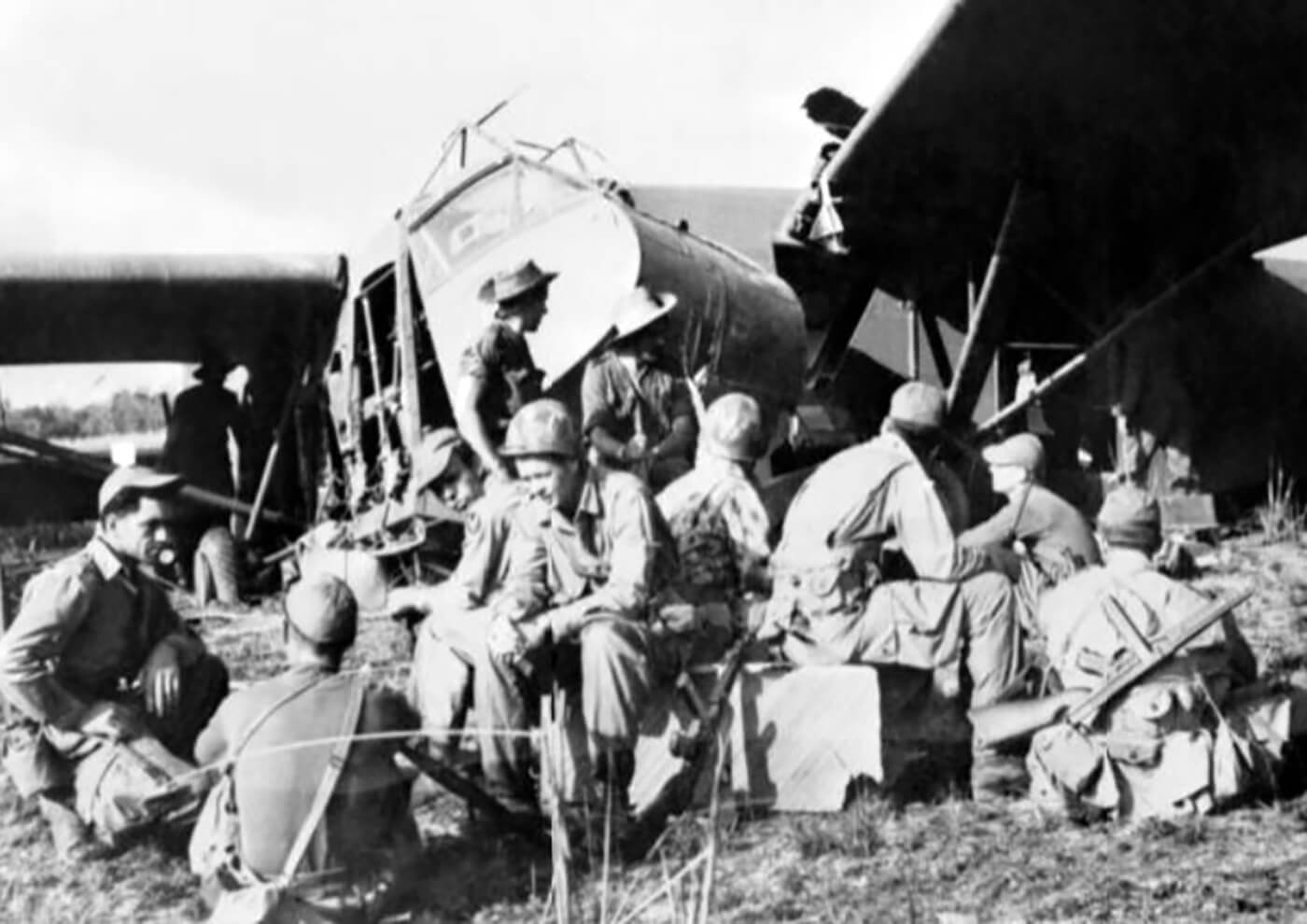
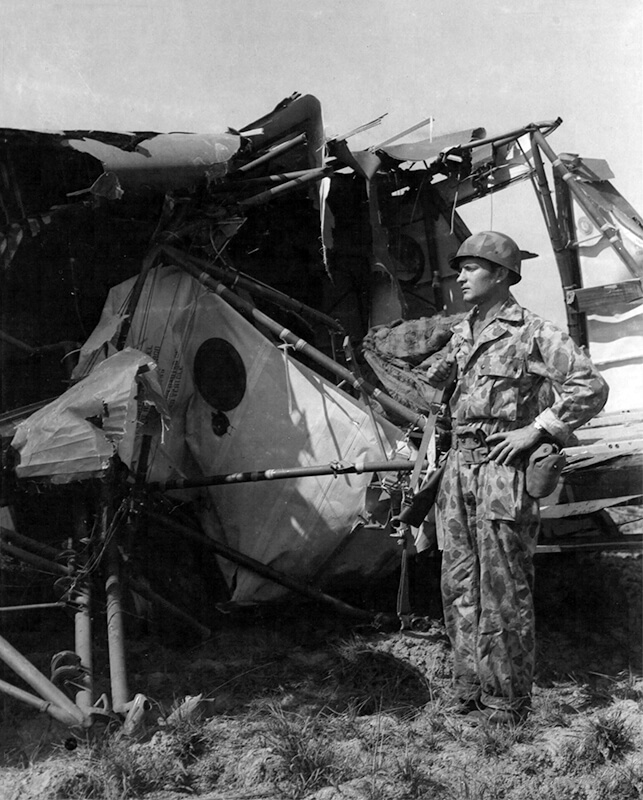
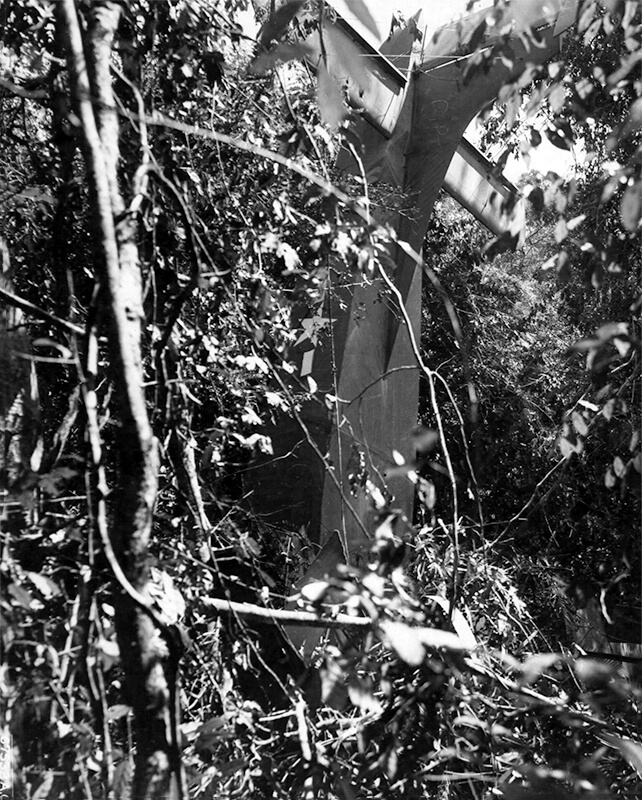

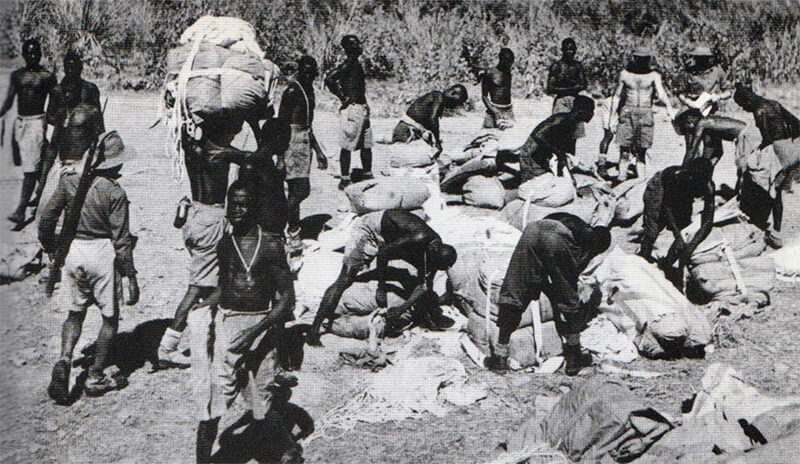
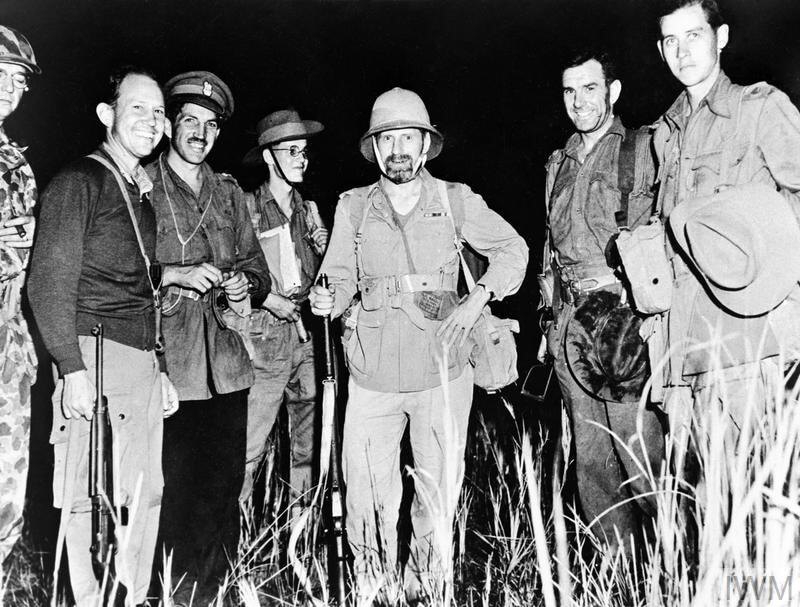
| 900th Airborne Engineer Aviation Company |
